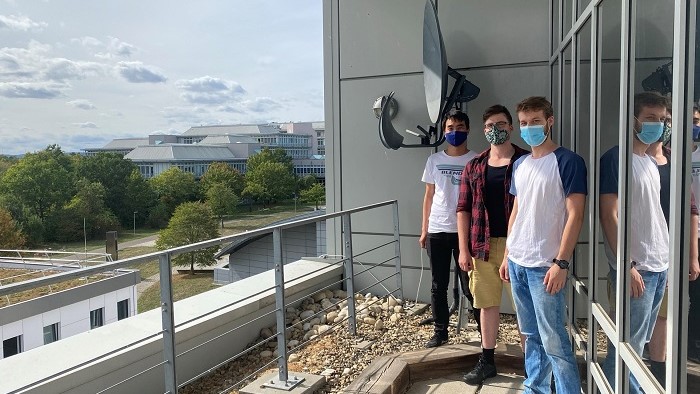Satellite Communications for Everyone
Although it could fall into oblivion in the age of social media and instant messaging, there is still an active worldwide movement dedicated to amateur radio: Fascinated from the ability to operate transceivers for different frequency ranges, to even develop some parts of those on their own, and thus to establish worldwide radio connections to fellow radio amateurs. To be able to operate independently of any infrastructure such as the Internet and thus to communicate across borders, between large cities as well as remote regions, and industrial nations as well as emerging countries.
With the goal of also using space for amateur radio, the AMSAT (Amateur Satellite) movement was founded in 1969. Since the launch of their first satellite Australis-OSCAR 5 in 1970, 15 satellites for amateur radio have been put into orbit over the last 50 years. Especially for scientific satellite missions with small satellites, the worldwide AMSAT movement is an important link and partner.
A Geostationary Satellite for Radio Amateurs
A highlight for the AMSAT community was the successful launch of the Es'hail 2 satellite of the Quatar telecommunications company Es'hailSat in November 2018. In addition to its technical equipment for commercial services such as satellite television, it was equipped with a transponder for the amateur radio service in a joint project of AMSAT and the Qatar Amateur Radio Society. After its commissioning it has received the amateur radio designation QO-100.
All previous amateur radio satellites are only visible for radio communication for a short period of time, since due to their relatively close orbital position they move along the sky. QO-100 is however located in the far geostationary orbit with an altitude of approx. 36,000 km above the equator, in the vicinity of the well-known Astra satellites for television reception. Thus, for an observer on Earth, QO-100 appears to be at a fixed point in the sky and can be reached simultaneously from almost half the globe.
The amateur radio transponders contained on QO-100 act like active mirrors for radio signals: via large antennas they "listen" to transmitted signals from the earth on a frequency of 2.4 GHz, amplify them and transmit them back converted to a frequency of 10.45 GHz. This enables a point-to-point radio connection even between distant locations on earth, which would not be possible without satellites due to the characteristics of radio propagation.
From the Theory of Communications into Practice
Almost every satellite represents a source of information, which must be transported wirelessly to the receiver. This applies to communication satellites for worldwide data links, as well as to sensor data from e.g. weather observation satellites or satellite-based remote sensing. Accordingly, an important part of the Elite Graduate Program "Satellite Technology" in Würzburg are courses in the analysis and development of radio systems for satellite communications. Since early 2020 this field of teaching and research at the University of Würzburg is led by Prof. Dr. Markus Gardill, himself a graduate of an ENB program in 2010. After theoretical foundations of communications and radio frequency engineering, the students put what they have learned into practice in the "Satellite Telecommunication Lab". Here they must face an open challenge in the context of a communications project.
Fascinated by the field of satellite communications, a group of students has set itself the goal of building and commissioning a ground station for the reception of QO-100 transmissions. Based on the skills acquired in the courses, the group was able to implement a functional ground station from the initial design of the RF architecture, the selection of components, their commissioning, and the programming of software for processing the received signals. The ground station continuously listens for QO-100 transmissions by means of an embedded microcomputer platform. Employees and students can connect to it via an Internet browser, and thus become listeners to amateur radio connections via QO-100. Accessible via satellite for half the world, implemented by hand - this is what learning success can feel like.
Text: Elite Graduate Program „Satellite Technology“


